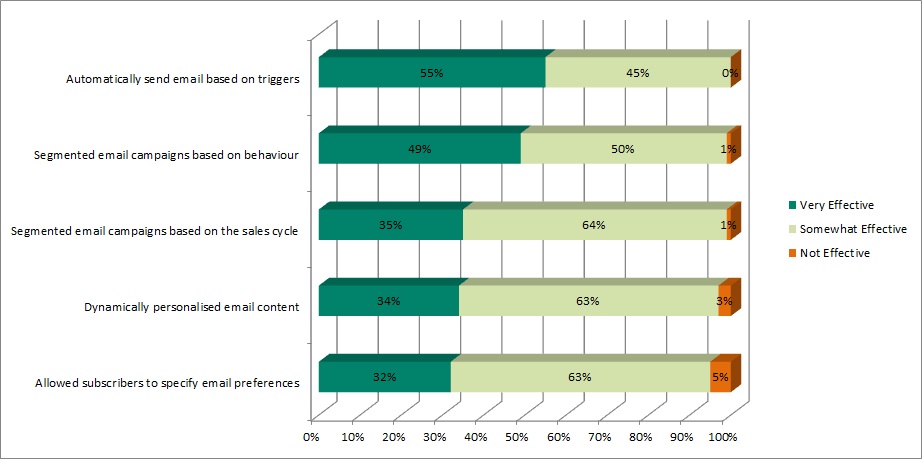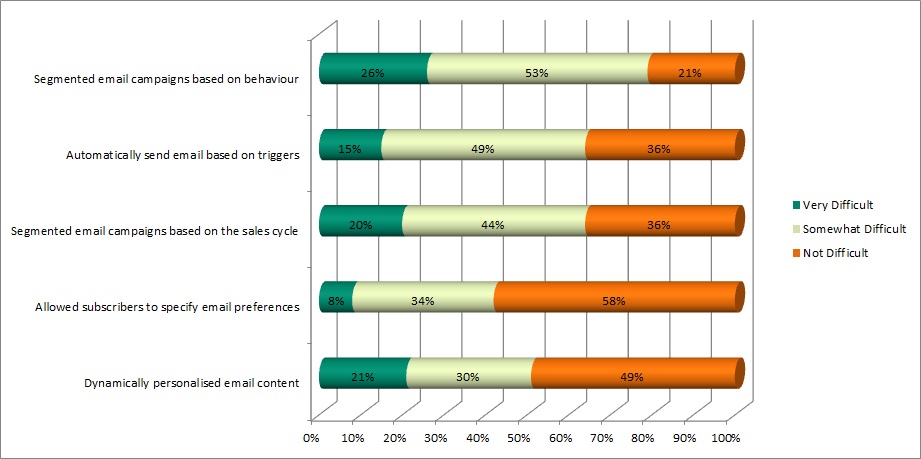Implementing automated marketing into your campaign is a decision that has to be carefully considered. The benefits in terms of increased ROI are tangible and real (if done correctly), however there are considerable challenges. These include aligning automation with campaign and company objectives, having a clear insight into the customer and sales lifecycle to deliver on these objectives, and understanding the volume of pre-crafted content that may need to be created in advance of implementation.
To highlight this point, Marketing Sherpa* surveyed over 1,000 companies to gauge the level of difficulty versus effectiveness of various email marketing tactics. These focused on the core components that increase relevancy:
- Allow subscribers to specify email preferences
- Dynamically personalise email content
- Segment email campaigns based on the sales cycle
- Automatically send email based on triggers
- Segment email campaigns based on behaviour
The feedback illustrates the balance to be struck around automation. While it is recognised that this is the most effective tactic in improving relevancy (fig. 1 below), it is also perceived to be one of the most difficult to implement - particularly for companies who are new to email marketing (fig. 2 below). Unsurprisingly, segmentation is still perceived to be the most difficult relevancy tactic to implement effectively.
Fig. 1

Fig. 2

In this short set of blog articles we will investigate different forms of email automation, and highlight areas of particular importance in campaign planning. Foremost in this process is an understanding of customer and/or sales lifecycles. Regardless of your level of experience, it is valuable to understand the potential of this tool in delivering ROI, and thereby get the most out of the drip marketing functionality in Sage E-marketing for Sage CRM.
-= David
* Source: Marketing Sherpa "2011 Email Marketing Benchmark Report", 2011

